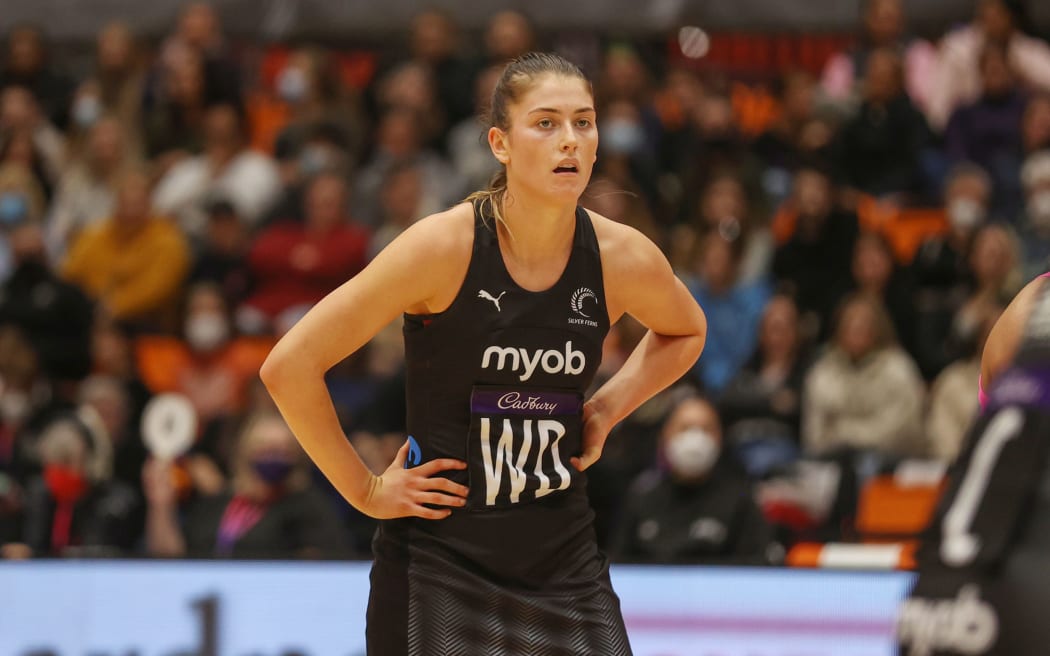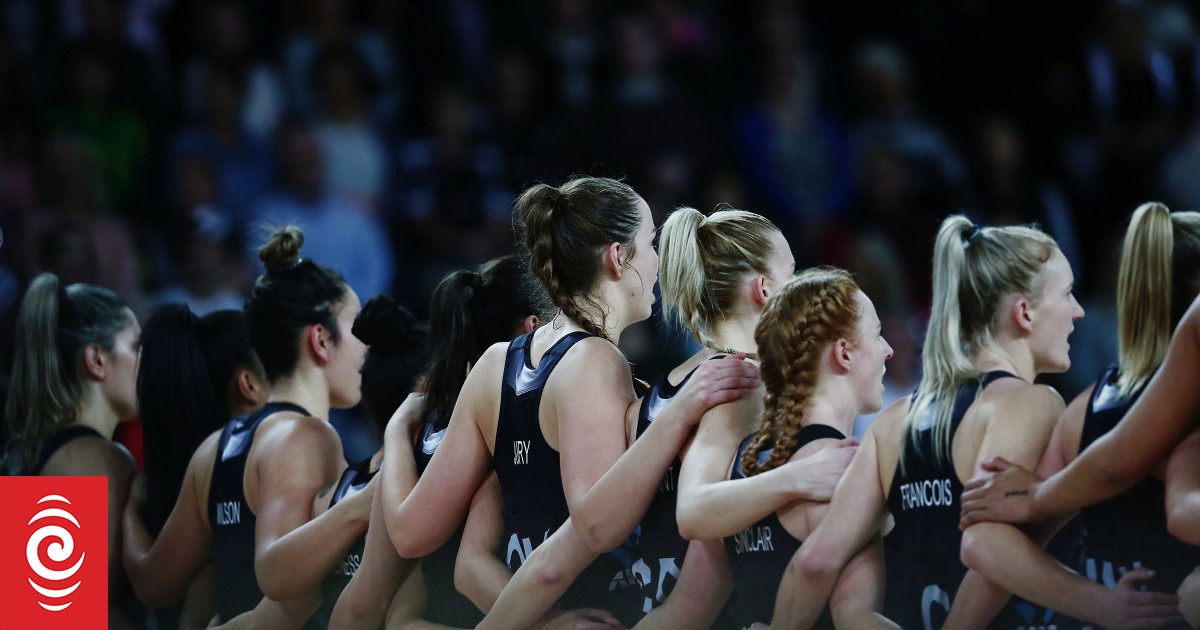Rise of rival codes a new reality for netball
For some time netball was the only female team sport in New Zealand that would pay its elite players.
That’s changed in recent years as traditionally male-dominated sports have recognised they have to invest more in the women’s side of the game and now girls are being offered far more choices.
Sports reporter Bridget Tunnicliffe takes a look at who gets paid what in New Zealand and how that’s rapidly changed.

The Silver Ferns have a traditional hold in New Zealand
Photo: Photosport
Netball
A new two year collective agreement was signed off a year ago, which represented a 20-25 percent increase in player retainers across the board on average.
The Silver Ferns annual contracts consist of a retainer, with the tiers starting from $30,000, going up to $56,000.
In addition match fees are $1500 per Test.
With the Silver Ferns playing up to 15 tests a year, the optimum earnings from match fees are about $22,500.
Silver Ferns also get a legacy payment divided across the squad each year.
When it comes to the ANZ Premiership, players are contracted for seven months and the salary cap for each team is $400,000.
ANZ retainers, paid by the franchises, range between $26,000 and $56,000.
On top of that each franchise can spend up to $100,000 on Non-Playing Agreements and Third Party Agreements.
Once you add up the Silver Ferns retainer, optimal match fees, and the ANZ retainer, the highest paying Silver Fern could earn in excess of $134,500.

Bernice Mene (right) was one of the first players offered money to play when she was recruited by the Southern Sting in the old National Bank Cup in the late 1990s.
Photo: www.photosport.nz
New Zealand Netball Players Association executive manager Steph Bond said the money players receive in New Zealand was about the same as their counterparts in Australia.
Australian netball has been facing a growing threat that New Zealand Netball is starting to – the advent of rival professional women’s sports competitions.
Female cricketers in Australia have received massive pay rises in recent years, becoming the country’s highest paid sportswomen and that’s being mirrored here.
In the past year, other codes have taken strides towards professionalism with the establishment of football’s Phoenix Women, Super Rugby Aupiki, and New Zealand’s first professional women’s basketball league.
Pay for play first appeared in netball in the late 1990s when the Southern Sting started enticing players to its franchise in the old National Bank Cup.
It’s taken a couple of decades of incremental improvements to get elite netballers to the point they are at now, while some of the recent pay increases seen in cricket and rugby have been exponential.
Cricket
Over 26,000 females participated in cricket last summer and New Zealand Cricket is working hard to increase that.
In July this year a new collective agreement effectively made the White Ferns the best paid female sports team in New Zealand.
Contracted White Ferns can now earn between $142,000 and $163,000, which includes both a retainer and match fees, should they play every game.
It represented a 100 percent increase on their previous deal.
For match fees, White Ferns get $4000 per One Day International and $2500 per Twenty20 match.

White Ferns star Amelia Kerr, also earns money playing in the BBL in Australia.
Photo: PHOTOSPORT
White Ferns players also have the right to go and play in leagues overseas such as the Women’s Big Bash League in Australia, which can see them earn an additional $75 to $100,000.
When it comes to domestic cricket, women from each major association receive between $18,146 to $19,146, which includes a retainer and match fees.
Players receive $800 in match fees for the one-day competition, and $575 for the Super Smash T20 format.
The highest-ranked White Fern, who also plays a full domestic season has the potential to earn around $180,000.
The jumps cricket have made have been significant, given that back in 2014 the most a White Fern could earn was around $25,000 a year.
In theory Silver Fern Kate Heffernan, who decided to concentrate on netball not long after picking up two White Ferns caps in 2018, could be earning more if she chose cricket.
That’s a scenario that would not have existed a few years ago.

Silver Fern Kate Heffernan
Photo: PHOTOSPORT
Rugby 15s
It was only four years ago that the Black Ferns received long overdue contracts for the first time.
That was significantly boosted earlier this year as part of a shift to a full-time employment model for the first time.
Given people can’t get enough of the Black Ferns right now after their World Cup triumph on home soil, it would be no surprise if there is a hike in earnings when the current agreement comes up for renewal.
The Black Ferns retainer starts at $35,000 and goes up to $70,000 for the top tier players. In addition, they get paid assembly fees of $2,000 per week.
Black Ferns took part in a number of camps and New Zealand Rugby Players Association chief executive Rob Nichol said they had forecast around a 100 days a year of assembly at optimal levels.
At the domestic level, there’s now an opportunity for female players to get paid to play, with the establishment of Super Rugby Aupiki this year.
In its inaugural year, Aupiki payments amounted to about $8000 for each contracted player. Next year, it’s nearly $9000.
By the time a Black Fern gets between $35 to $70,000 in retainers, plus $9000 from Super Rugby Aupiki, that’s $44,000 to $79,000 in guaranteed income.
Adding assembly fees can make a big difference and in a year with a number of Tests that could amount to $24,000 for a large majority of the squad.
Total earnings in a good year could range from $65,000 to $100,000.
Both the Black Ferns and Sevens players also get a top up from the Legacy Fund, a pool of money split between the players based on the length of time they’ve been contracted in the squad.
“For the Black Ferns 15s it’s $150,000 across the squad and the top players will get maybe $12,000, and the new players might be on $1000 from the Legacy Fund,” Nichol said.

Sarah Hirini has been a star of both the sevens game and the 15s.
Photo: © Photosport Ltd 2021 www.photosport.nz
Sevens
The New Zealand women’s sevens team has had a short history. In 2012 the side embarked on the first IRB women’s sevens world series, but they’ve quickly become one of the best paid female teams in New Zealand.
The Black Ferns sevens, who are in full-time camps in Mount Maunganui, get an annual retainer.
The minimum retainer has just increased to $50,000 and goes up to $90,000 for the highest ranked players.
Like their 15s counterparts, they get assembly fees of $2,000 a week when they go on the road for a Sevens World Series tournament.
The top ranked sevens players can earn over $110,000 once assembly fees are added.
Rob Nichol said 15s is catching up with Sevens.
“It’s getting there – we’re now at the stage where there are some players who will look seriously at which code they want to prioritize.
“The sevens programme started up earlier, it attracted the best women’s rugby players in terms of athletes, it professionalized way earlier than 15s. Every player really wanted to play sevens, because that’s where you got your full time contracts and travelled the world and went to the Olympics.
“Now we kind of have a situation where you’ve almost got an equality across both squads. And that’s going to be really interesting to see how it plays out.
“If you’re a sevens player who’s sort of on the periphery, not making the tournament team, but you’re in the starting 15 for the Black Ferns – then there’s a bloody good chance you’ll do better playing 15s financially. It’s definitely getting to that point.”
Rugby star Portia Woodman initially played netball for the Northern Mystics before switching to codes in 2012.
When Woodman heard that sevens was going to make its Olympic debut, she went along to a trial in 2012 and hasn’t looked back and has had just as much success in the 15-aside game.
There are now around 32,000 registered female rugby players in New Zealand, compared to over 140,000 registered netball players (and 300,000 plus people participate in the game annually).
If you want to look at the odds, you have a better chance of representing New Zealand in rugby than you do in netball and financially rugby is getting more attractive.

Sevens and 15s rugby star Portia Woodman.
Photo: Andrew Cornaga / www.photosport.nz
Football Ferns
Participation among girls and women in football is growing here and that will no doubt get a shot in the arm when New Zealand jointly host the FIFA Women’s World Cup next year.
None of the players in the national women’s team are on retainers.
Players selected for specific campaigns receive a daily allowance in the vicinity of $115 per day.
Players also share a percentage of prize-money relative to each FIFA tournament.
For the most part Football Ferns are employed by their respective clubs, whether that be in Europe or the USA, and now players have the opportunity to compete domestically and get paid.
The Wellington Phoenix have just begun their second season in the A-League Women’s competition. Players are contracted for seven months.
According to Australia’s Professional Football Association, the minimum wage for the 2022/23 season is about $22,000 NZ. Wage increases scheduled over three seasons represent a 50 percent increase.

Next year is a golden opportunity for the Football Ferns to increase the profile of the sport in New Zealand.
Photo: PHOTOSPORT
Basketball
There’s been big surge in female participation in basketball in New Zealand over the past few years and there’s a clearer pathway now to the Tall Ferns.
This year with the creation of New Zealand’s first professional women’s basketball league, Tauihi Basketball Aotearoa, players were able to get paid domestically for the first time.
The Salary Cap is around $100,000 for each of the five franchises and it’s paid out on a tiered system.
The maximum a player can receive is $2000 per week so over eight weeks the very highest-earning players will receive $16,000.
It’s understood the Tall Ferns players get daily payments while they are assembled for camps or tours.
Black Sticks
New Zealand’s best female hockey players are very much paid on a part-time basis.
The players association has been negotiating a new contract with Hockey New Zealand, which should be announced shortly.
It’s understood that players currently get a retainer and per-day assembly payments when the Black Sticks link up for international tournaments.
For all the latest Sports News Click Here
For the latest news and updates, follow us on Google News.

